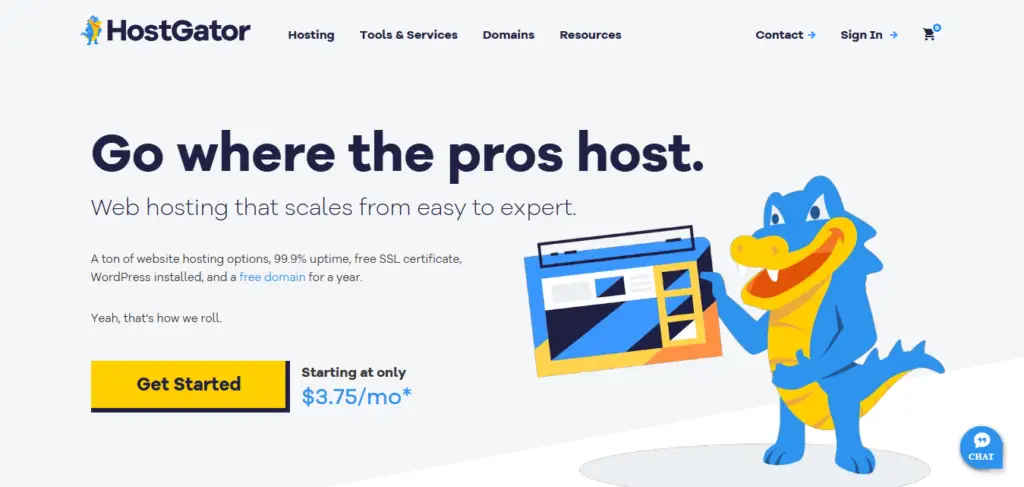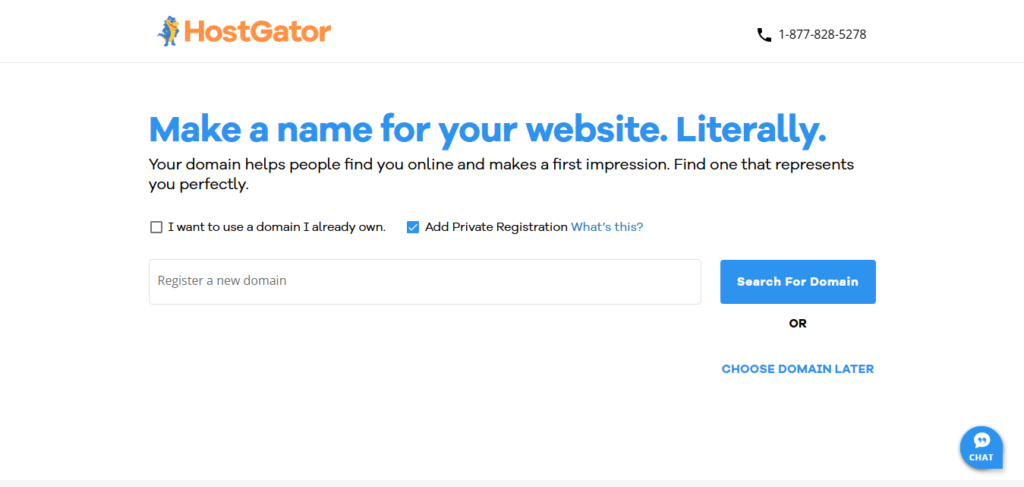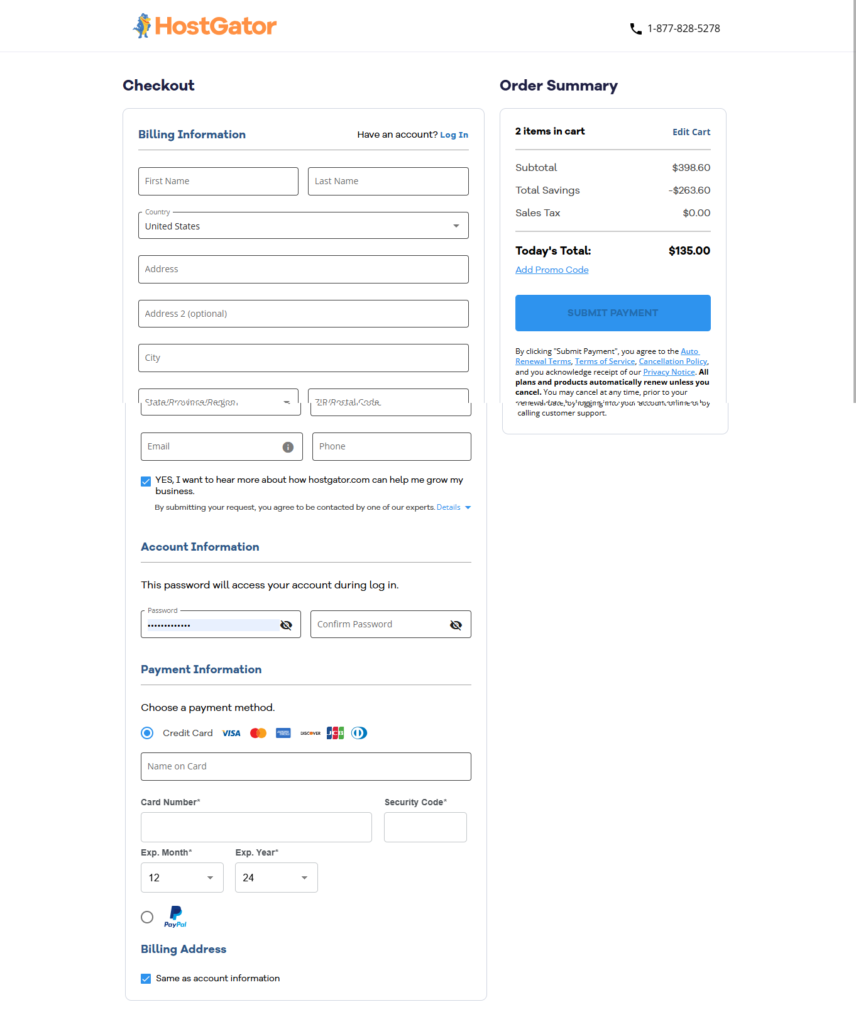
Thinking about starting a tech blog? Great idea—tech is one of the most profitable niches out there. If you play your cards right, you can make thousands every month just by sharing what you love.
Whether you’re into:
- Reviewing the latest gadgets
- Sharing tips on coding or web development
- Covering breaking news in AI or software
- Or just geeking out over the newest apps and tools
A tech blog is a great way to turn that passion into income.
And no, you don’t need to be famous or have a huge following to make money. With smart strategies like ads, affiliate links, and sponsorships, it’s totally possible to build a blog that pays. Want to see how bloggers actually do it? Check out this guide on how to make money blogging—it breaks down all the ways you can earn.
So if you’re ready to turn your love for tech into a side hustle (or even a full-time gig), let’s get into how to start a tech blog and make money from it.
5 Quick Steps: How to Start a Tech Blog (Fast & Easy)
Starting a tech blog doesn’t have to be complicated. In fact, you can have one up and running today if you follow these simple steps:
Step 1: Pick a Tech Sub-Niche
Choose a specific area to focus on. This helps you stand out and attract the right readers. Some popular ideas include:
- Smart home devices
- PC building and custom setups
- AI tools and apps
- Coding for beginners
Step 2: Get Your Domain & Hosting
You’ll need a domain name and web hosting to get your blog online. For beginners, HostGator is a budget-friendly and easy option—perfect for starting out without the tech headache. Plus a free domain and a 30 days money back gurantee.
Step 3: Install WordPress (Free & Beginner-Friendly)
Inside your HostGator account, you can install WordPress with just a click. It’s free, customizable, SEO-friendly, and super easy to use—even if you’re not tech-savvy.
Step 4: Start Writing Helpful Posts
Focus on creating content that solves problems or answers common questions. Think tutorials, product reviews, comparisons, or quick how-tos.
Step 5: Drive Traffic to Your Blog
No readers = no income. Here’s how to get eyeballs on your content:
- Optimize for SEO (so people can find you on Google)
- Share on social media (Pinterest, Reddit, X, LinkedIn—wherever your audience hangs out)
How to Monetize Your Tech Blog (Even if You’re Just Starting)
Yes, you can start earning even as a beginner—and it’s easier than you think:
- 💰 Google AdSense – Earn $500–$2,000/month once you hit 10k visitors or less
- 💰 Amazon Associates – Get 4–10% commission on tech products you recommend
- 💰 Sponsored Posts – Partner with brands and earn $500–$5,000 per post
- 💰 Digital Products – Sell your own eBooks, mini-courses, or tech guides ($100–$1,000 per product)
Want more ways to earn? Check out this full breakdown on how to make money blogging.
What You’ll Walk Away With
By the end of this guide, you’ll:
✅ Have your own tech blog—fully set up and ready to go
✅ Know what to write about—no more writer’s block
✅ Understand how to make money from day one
✅ Be ready to grow your traffic and income month by month
Starting a tech blog isn’t just a hobby—it’s the first step toward building a real online business around your tech knowledge.
Ready to launch your blog today? Let’s get started! 🚀
What You Need to Start a Tech Blog
Here are the essential tools and resources you need to launch a successful tech blog that can make you money:
- A Computer – A laptop or desktop is necessary for writing blog posts, managing your website, and customizing your layout.
- A Domain Name – Your domain is your website’s address (e.g., yourtechblog.com). Choose something brandable, easy to remember, and related to technology.
- A Blogging Platform – WordPress.org is the best option for starting a tech blog. It’s user-friendly, flexible, and supports various monetization methods.
- Web Hosting – Web hosting is where your blog’s files are stored and made accessible online. I recommend HostGator, as it’s beginner-friendly and offers seamless WordPress installation.
Note: If you are wondering why not go directly to WordPress to get started, it doesn’t work that way; you need a web hosting provider to activate WordPress. When you sign up for HostGator, you will have easy access to WordPress within your HostGator account, plus a free domain and a 30 days money back gurantee.
Affiliate Disclosure: This post may include affiliate links with special discounts. Using them saves you money and supports our site at no extra cost to you. Win-win right! Check out our [Privacy Policy] for more details. Thanks for your support!
How to Start a Tech Blog and Make Money (In 9 Simple Steps)
For this guide, we’ll be using HostGator—one of the most beginner-friendly and reliable hosting providers out there. (If you’re still weighing your options, check out this list of the best web hosting for bloggers.)
Here’s a quick breakdown of the steps to get your blog off the ground:
- Step 1: Pick a focused tech sub-niche
- Step 2: Head over to HostGator to kick things off
- Step 3: Select a hosting plan that fits your needs
- Step 4: Register a unique domain name
- Step 6: Choose your preferred hosting Subscription term
- Step 6: Set up your HostGator account
- Step 7: Install WordPress with one click in HostGator
- Step 8: Pick a pre-made blog theme that fits your style
- Step 9: Customize your pages and start publishing content
Step 1: Start Within A Tech Sub-niche
Starting with a specific tech sub-niche is the best way to launch your blog successfully. Instead of covering everything in tech, focus on one main category first.
This will help you to:
✅ Build expertise and credibility in a focused area
✅ Attract a dedicated audience interested in that topic
✅ Rank better on search engines by targeting specific keywords
✅ Avoid feeling overwhelmed by too many topics
Once your blog gains traction, you can gradually expand into other tech sub-niches to discover more content ideas and reach a broader audience.
Here are some tech blogging sub-niches you can decide to start from;
1️⃣ Gadget & Tech Reviews
What is it about?
This sub-niche focuses on reviewing the latest gadgets, electronics, and software. If you love testing new products and giving recommendations, this could be a great niche. Tech enthusiasts, shoppers, and professionals rely on reviews before making a purchase.
📌 Examples of Blog Post Topics:
- 🔹 Best Laptops for Programmers in 2025
- 🔹 iPhone vs. Android: Which One Should You Buy?
- 🔹 Top 10 Must-Have Smart Home Devices
- 🔹 The Best Budget Gaming Headphones
- 🔹 5 Things to Consider Before Buying a Smartwatch
2️⃣ AI & Machine Learning
What is it about?
Artificial intelligence (AI) and machine learning (ML) are rapidly transforming industries. This sub-niche focuses on AI innovations, tools, and how they impact different fields. If you’re passionate about cutting-edge technology and its future potential, this is a great choice.
📌 Examples of Blog Post Topics:
- 🔹 How AI is Changing Everyday Life
- 🔹 Top 5 AI Tools for Content Creators
- 🔹 Is ChatGPT Replacing Human Writers?
- 🔹 AI in Healthcare: How Robots Are Assisting Doctors
- 🔹 The Future of AI-Powered Virtual Assistants
3️⃣ Cybersecurity & Privacy
What is it about?
With the rise in cyber threats, people are more concerned about online security than ever. A cybersecurity blog helps users understand how to protect their data, avoid scams, and stay safe online. If you’re interested in ethical hacking, data protection, or online privacy, this could be your niche.
📌 Examples of Blog Post Topics:
- 🔹 How to Keep Your Personal Data Safe Online
- 🔹 Best VPNs for Secure Browsing in 2025
- 🔹 Why You Should Use Two-Factor Authentication
- 🔹 How to Identify and Avoid Phishing Scams
- 🔹 The Dangers of Public Wi-Fi: How Hackers Steal Your Data
4️⃣ Software & App Development
What is it about?
This sub-niche is perfect for programmers and developers who want to share coding tutorials, app-building guides, and software-related insights. If you enjoy coding and want to teach others, a blog on software development could be an excellent fit.
📌 Examples of Blog Post Topics:
- 🔹 How to Build Your First Mobile App
- 🔹 Python vs. JavaScript: Which One Should You Learn?
- 🔹 Best Free Tools for Web Developers
- 🔹 How to Fix Common WordPress Errors
- 🔹 A Beginner’s Guide to Creating an E-commerce Website
5️⃣ Tech News & Trends
What is it about?
Tech is always evolving, and people love staying updated on the latest gadgets, software, AI advancements, and industry news. A tech news blog covers major announcements, new product launches, and emerging trends.
📌 Examples of Blog Post Topics:
- 🔹 The Future of Smart Homes: What to Expect
- 🔹 Is Cryptocurrency Still a Good Investment?
- 🔹 Latest Breakthroughs in Quantum Computing
- 🔹 What’s New in the World of Electric Cars?
- 🔹 The Impact of 5G on Mobile Devices
6️⃣ Gaming & eSports
What is it about?
Gaming is a massive industry with millions of dedicated fans. A blog in this sub-niche can cover game reviews, gaming hardware, streaming guides, or eSports tournaments. If you are interested in video games and want to create content around them, this could be your perfect niche.
📌 Examples of Blog Post Topics:
- 🔹 Best Gaming Laptops Under $1,000
- 🔹 How to Start a Career in eSports
- 🔹 The Evolution of Virtual Reality Gaming
- 🔹 Best Streaming Equipment for Gamers
- 🔹 A Beginner’s Guide to Making Money as a Twitch Streamer
7️⃣ Tech for Beginners
What is it about?
Many people struggle with basic tech skills, such as setting up a website, troubleshooting software, or using new apps. This sub-niche focuses on teaching non-techies how to use technology in simple steps.
📌 Examples of Blog Post Topics:
- 🔹 How to Set Up a Website in 10 Minutes
- 🔹 Best Free Software for Remote Work
- 🔹 Easy Tech Hacks Everyone Should Know
- 🔹 How to Speed Up a Slow Computer
- 🔹 A Beginner’s Guide to Using a VPN
Which Tech Sub-Niche Should You Choose?
The best tech blog sub-niche for you depends on your interests, expertise, and the audience you want to target.
Here are some quick tips to help you decide:
✅ Love gadgets? → Start a Gadget & Tech Review Blog
✅ Interested in AI? → Focus on AI & Machine Learning
✅ Passionate about online security? → Go for Cybersecurity & Privacy
✅ Know how to code? → Start a Software & App Development Blog
✅ Enjoy following tech news? → Cover Tech News & Trends
✅ Interested in gaming? → Write about Gaming & eSports
✅ Want to help beginners? → Teach Tech for Beginners
🚀 Once you choose your niche, follow the step-by-step guide above to launch your tech blog today!
Relevant Post – Here are other blogging niche sub-niche if you entirely want a different niche outside tech blogging.
Follow The Steps Below To Get Going!
Step 2: Click On “HostGator” To Get Started
Once you’ve chosen your tech sub-niche, you can use our HostGator discount link to get affordable hosting—plus a free domain name (something most other hosts charge for).
HostGator is great for beginners on a budget, but if you’re planning for high traffic or premium performance later on, options like Cloudways, SiteGround, Kinsta, or WP Engine are worth considering. You can always upgrade or switch hosts as your blog grows.
⚡ Fast hosting means a better experience for your tech-savvy audience!

Step 3: “Choose Your Preferred HostGator Plan”
Choosing the Hatchling plan on HostGator is the most affordable and best options for beginners. As you can always upgrade your hosting plan at any time or even entirely change hosting our web hosting provider while your blog site on WordPress is still intact.

Step 4: Choose a Unique Domain Name
After you select your plan, you’ll be guided to a simple page to claim your domain and complete the setup!

What to Consider When Choosing a Domain Name for Your Tech Blog
- ✅ Make It Memorable and Easy to Spell – Choose a name that’s simple, clear, and easy to type. Avoid numbers, hyphens, or complex spellings that might confuse visitors.
- ✅ Reflect Your Tech Niche – Your domain name should instantly tell people what your blog is about. If you’re focusing on gadgets, cybersecurity, or AI, consider including relevant tech-related words. Example: GadgetGuru.com, AIInsider.com, CyberShieldBlog.com.
- ✅ Keep It Short and Simple – A short domain (6-14 characters) is easier to remember and type. Avoid long, complicated names that people might forget.
- ✅ Make It Easy to Read and Pronounce – Avoid words that are hard to spell or combinations of letters that look confusing (like TechXtrmly instead of TechExtreme). If you can say it out loud easily, it’s a good choice!
Relevant Resource – 120+ Unique Domain Name Ideas For A Tech Blog
Step 5: Select Your HostGator Hosting Subscription Period
Verify that you’re on the Hatchling plan on the left and adjust your subscription to a 1-year or 36-month period, depending on your budget.

Step 6: Create Your HostGator Account
Register for HostGator by filling in your personal details and picking a strong password.

Step 7: Install WordPress in Your HostGator Account
Getting WordPress set up is quick and beginner-friendly with HostGator:
- After signing up, follow the on-screen prompts to install WordPress automatically.
- You’ll be guided through creating your WordPress login details—once done, you’re in!
- If needed, you can log in to your HostGator dashboard, go to the “Websites” or “WordPress” section, and install it from there.
Now your blog is live—you just need to design it.
Step 8: Pick a Theme for Your Tech Blog
Themes control how your blog looks, and WordPress makes it easy to choose one you like:
Here’s how to do it:
- Go to Themes: In your WordPress dashboard, hover over “Appearance” and click “Themes.”
- Browse & Search: Use the search bar to find themes—try keywords like tech blog, modern, or responsive.
- Filter for Features You Want: Look for themes that offer:
- Clean layouts
- Mobile-friendly design
- Built-in support for images, videos, and social links
- Preview Before Installing: Hover over a theme and click “Preview” to see how it would look on your blog.
- Check Ratings & Reviews: See what other users say to ensure it’s easy to use and reliable.
- Start With a Free Theme: Free themes are great when you’re just starting. You can always upgrade to a premium one later for more features and customization.
Step 9: Customize Your Blog and Set Up Your Pages
Now you can customize your blog to look more like a real estate blog with a polished look that attracts clients and builds authority:
- Create Instant Credibility
- Use professional blues/grays (or local market colors)
- Add high-res hero images of luxury properties
- Install an IDX plugin for live MLS feeds (if representing properties)
- Must-Have Pages for Real Estate Blogs
- About Page: “Why Trust My Market Insights” (showcase credentials)
- Neighborhood Guides: “Where to Invest in [City]” (SEO goldmine)
- Free Valuation Tool: “What’s Your Home Worth?” (lead generator)
- Publish Your First High-Value Post
Start with these proven formats:- “2025 [City] Housing Market Predictions”
- “First-Time Buyer Mistakes to Avoid”
- “Luxury Home Tour: Inside [Famous Local Property]”
Your First 7-Day Action Plan:
- Customize your site main pages [home, about, contact, etc]
- Publish 5 pillar posts (market trends + neighborhood spotlights)
- Set up Google AdSense
- Start promoting your blog
Normally you will learn as you grow and get to implement better blogging strategies to effectively grow your audience and make more money.
Find Profitable TechFind Profitable Tech Blog Post Ideas That Actually Make Money
Now that your tech blog is live, it’s time to fill it with content that attracts readers and earns income. The right topics can bring in traffic, generate clicks, and convert visitors into buyers.
Below are powerful post ideas divided into two key categories:
- Posts that bring in traffic and ad revenue
- Posts designed to earn from affiliate links and product recommendations
We’ll also share tools and tips to help you scale and monetize faster.
[1]. Traffic-Boosting, Ad-Friendly Tech Topics
These blog post types are great for growing your audience fast—and perfect for platforms like Google AdSense, Mediavine, or Ezoic.
🔹 Trending Tech Topics
These get clicks, shares, and quick rankings:
- “Top Tech Fails of 2025 So Far”
- “Is [New Gadget] Worth Buying? Early Review”
- “AI Tools That Are Replacing Jobs Right Now”
👉 Pro Tip: Use Google Trends and this keyword research tools guide to spot hot topics.
🔹 How-To Guides & Tutorials
These are evergreen, SEO-friendly, and ad-optimized:
- “How to Build a Gaming PC Under $1,000”
- “Speed Up an Old Laptop in 10 Minutes”
- “How to Use ChatGPT for Coding (With Examples)”
Want to make them more readable? Learn how to format a blog post.
🔹 Comparison & List Posts
Easy to write, highly shareable, and great for rankings:
- “Windows vs. Mac for Programmers (2025 Edition)”
- “10 Must-Have Chrome Extensions for Developers”
- “Free vs. Paid VPNs: Which Should You Trust?”
Need more ideas? Explore this massive list of 300+ blog post topic ideas.
[2]. Affiliate-Focused Tech Posts That Convert
These are designed to make direct income through affiliate marketing.
🔹 Product Roundups & Reviews
Include affiliate links from Amazon, BestBuy, or other programs:
- “Best Laptops for Developers in 2025 (Tested & Ranked)”
- “Top 5 Noise-Canceling Headphones for Remote Work”
- “Best Smartwatches Under $200”
Use a tool like SEMrush to find buyer-intent keywords like “best [product] for [use case].”
🔹 AI & Software Tool Comparisons
Perfect for SaaS affiliate programs:
- “Notion AI vs. ClickUp – Which Boosts Productivity?”
- “Is Jasper AI Worth It? (2025 Honest Review)”
- “Top AI Coding Assistants Compared (Free & Paid)”
👉 Add a “comparison table” for faster conversions. Need help writing this kind of content? Learn how to write a high-quality blog post.
🔹 Deal & Discount Roundups
Seasonal content that spikes in traffic:
- “Best Black Friday Tech Deals (Updated Hourly)”
- “Student Discounts for Laptops & Software – 2025 Edition”
Boost clicks with strong CTAs—learn how to write attention-grabbing blog headlines.
[3]. ♻️ Repurpose & Refresh Older Content
Old posts can bring in new revenue:
- “2025 Update: Best Mechanical Keyboards for Gaming” – Update reviews and links
- “Top Free Photoshop Alternatives for Creators” – Keep it relevant and up to date
Use SurferSEO or other AI tools to optimize these posts for search.
📅 Plan a Simple Content Schedule
Here’s a basic weekly blog plan to grow steadily:
| Weekly Post Type | Monetization Goal |
|---|---|
| 1 Trending Topic | Social shares + ad traffic |
| 1 How-To Guide | SEO traffic + ad impressions |
| 1 Affiliate List/Review | Direct commissions |
Want more structure? Learn how often you should post on your blog.
⚙️ Tools to Speed Up Your Content Creation
Don’t waste hours writing from scratch. These tools can help:
- ChatGPT: Quickly generate blog title ideas or outlines
- Jasper AI: Great for writing long-form content
- Canva: Create stunning infographics and comparison charts
- SurferSEO: Optimize old and new posts for better search performance
Check out the best AI tools for bloggers here.
📈 How Many Blog Posts Do You Need to Make Money?
Here’s a quick monetization timeline for tech blogs:
- 0–50 posts: Focus on affiliate content for faster income
- 60 – 110 posts: Add display ads, start building consistent traffic
- 200+ posts: Pitch sponsorships, sell digital products, scale your blog
Get the full breakdown: How many blog posts do you need to make money?
Final Tip: Publish Consistently
Stick to a schedule of 2–3 posts per week. It builds momentum and helps you grow faster. Need help staying on track? Here’s a full guide on how often to post for blog growth.
Not enough time to write it all yourself? Learn how to hire a good blog writer and scale your content without burnout.
Want more ideas across niches? You might also like these automotive blog topic ideas too!
How to Monetize Your Tech Blog Posts
The tech industry is one of the most profitable niches for blogging, with endless monetization opportunities. Whether you cover software reviews, gadget comparisons, AI developments, or coding tutorials, your expertise can lead you to generate significant stream of passive income through your blog.
Why Tech Blogs Make Money Easily
✔ High advertiser demand (tech companies have big marketing budgets)
✔ Premium affiliate commissions (SaaS and hardware offer 20-50% payouts)
✔ Recurring revenue potential (through memberships and digital products)
✔ Sponsorship opportunities (brands pay top dollar for tech reviews)
Tech audiences are valuable because:
- They’re early adopters who buy new products
- They research extensively before purchasing
- They engage with in-depth, technical content
Let’s break down the most effective ways to turn your tech blog into a revenue-generating machine.
1. Display Advertising: Passive Income from Tech Traffic
Why Tech Blogs Earn Premium Ad Rates
Tech is a high-CPM niche because:
- Gadget manufacturers pay premium rates
- Software companies aggressively advertise
- B2B tech services have large budgets
Average RPMs (Revenue Per 1,000 Visitors)
Here’s a quick review of how much you can make from different ad networks based on your average RPMs (Revenue per 1,000 visitors) and traffic requirements to join:
| Ad Network | Avg. RPM Range | Traffic Requirement |
|---|---|---|
| Google AdSense | $15 – $40 RPM | No minimum traffic |
| Ezoic | $25 – $60 RPM | 10K+ visits per month |
| Mediavine | $40 – $80 RPM | 50K+ sessions per month |
| Raptive | $60 – $120+ RPM | 100K+ pageviews per month |
💡 RPM = Revenue per 1,000 pageviews — the higher your traffic and engagement, the more you can earn.
How to Start Monetizing Your Site With Ads
✅ Step 1: Start with Google AdSense
- Focus on “best X” posts (e.g., “Best Laptops for Programmers”)
- Ensure you have 15+ quality posts before applying
✅ Step 2: Optimize Ad Placements
- Top-performing ad locations:
- Below post titles (728×90 leaderboard)
- In-content ads after 2-3 paragraphs
- Sidebar sticky ads for affiliate promotions
✅ Step 3: Upgrade to Premium Networks
When you grow you traffic over time you can migrate to other higher paying ad networks.
- Ezoic (uses AI to optimize ads)
- Mediavine/Raptive (highest payouts)
💡 Pro Tip: Tech comparison posts (“MacBook vs Surface”) get the highest-paying ads from competing brands.
2. Affiliate Marketing: Big Commissions from Tech Products
Why Tech Affiliate Programs Pay Exceptionally Well
- Software (SaaS): 20-50% recurring commissions
- Hardware: 5-15% on expensive items
- Digital tools: 30-70% on the first payment
Best Tech Affiliate Programs
✅ Hardware & Gadgets
- Amazon Associates (4-8% on electronics)
- Best Buy Affiliates (1-5% on tech)
- B&H Photo Video (up to 8%)
✅ Software & SaaS
- WP Engine ($200+ per signup)
- SEMrush/Ahrefs ($100+ per sale)
- Canva (20% recurring)
- Adobe Creative Cloud ($50+ per sale)
✅ Web Services
- Bluehost/SiteGround ($100+ per hosting signup)
- Cloudways ($50 per referral)
Tip: Tech-based Affiliate Programs to Monetize Your Blog
Types of affiliate posts that perform well are;
- “Best X for Y” guides (e.g., “Best Monitors for Coders”)
- Comparison posts (“Figma vs Adobe XD”)
- Deal posts (“Black Friday Tech Deals”)
- Tutorials (“How to Use [Tool]” with affiliate link)
Tip: Here are Some Affiliate-based Blog Post Very Monetizable
💰 Earnings Potential:
- Beginners: $500 – $3,000/month
- Established: $10K – $50K/month
💡 Pro Tip: Focus on high-ticket items (like $3,000 laptops) and recurring SaaS commissions for maximum earnings.
3. Sponsored Content & Paid Reviews
Tech companies actively seek bloggers for:
- Product reviews
- Sponsored tutorials
- Brand comparisons
💰 Sponsorship Rates:
- Small blogs (10k visits): $300 – $1,500/post
- Medium (50k+): $1,500 – $5,000
- Large (100k+): $5,000 – $20,000
✅ How to Get Sponsorships:
- Join tech influencer networks (e.g., Intellifluence)
- Add a “Work With Us” page
- Pitch brands directly
Action Plan to Start Earning
- Apply to AdSense (start monetizing)
- Join 3 affiliate programs (Amazon, WP Engine, SEMrush)
- Pitch 5 tech brands for sponsorships
For inspiration, see successful tech blog income reports.
Tip: Other Ways to Monetize Your Tech Blog and Make Money
How to Promote Your Blog Post to Increase Traffic (SEO & Social Media Focus)
Now that you’ve set up your tech blog, crafted great content, and explored monetization strategies, the next crucial step is promoting your blog posts to drive traffic. Without promotion, even the best content can go unnoticed.
While there are many ways to promote a blog, SEO (Search Engine Optimization) and social media marketing are the two most effective organic methods to attract consistent, long-term traffic. Paid ads can help, but if you want sustainable growth, mastering SEO and social media is non-negotiable.
Let’s break down how to use these strategies effectively, with a focus on applying them to a tech blog as an example.
1. SEO: The Best Long-Term Traffic Source
SEO helps your blog rank higher on Google, bringing free, consistent traffic over time. Here’s how to optimize your fashion blog for SEO:
A. Keyword Research & Optimization
- Use keyword research tools (Google Keyword Planner, Ubersuggest, Ahrefs) to find what your audience is searching for.
- Example: For a fashion blog, target keywords like:
- “Best summer outfits 2025”
- “How to style oversized blazers”
- “Affordable sustainable fashion brands”
- Include keywords in:
- Title & URL
- First 100 words
- Subheadings (H2, H3)
- Image alt text
B. On-Page SEO
- Write long-form content (1,500+ words performs better).
- Use internal links to keep readers on your site (e.g., link to your post on “How to build a capsule wardrobe” when discussing minimalist fashion).
- Optimize blog post images (compress with TinyPNG, use descriptive file names like “black-leather-jacket-outfit-ideas.jpg”).
C. Off-Page SEO (Backlinks)
- Guest blogging on fashion sites (e.g., Vogue, Who What Wear, Harper’s Bazaar) helps build authority.
- Get backlinks by:
- Creating shareable infographics (e.g., “The Evolution of Denim Trends”)
- Writing expert roundups (ask influencers for quotes)
- Submitting to fashion directories & forums
Want more SEO tips? Check out our guide on How to Optimize Your Blog for SEO and the Best SEO Tools for Bloggers.
2. Social Media Promotion: Drive Instant Traffic
SEO takes time, but social media can bring immediate traffic. Here’s how to leverage it for a fashion blog:
A. Pinterest (Best for Fashion Blogs)
- Create eye-catching pins with Canva.
- Use keywords in pin descriptions (e.g., “Boho outfit ideas for summer travel”).
- Join group boards to expand reach.
B. Instagram & TikTok
- Post outfit reels & styling tips with trending sounds.
- Use relevant hashtags (#OOTD, #FashionTrends2025).
- Engage with fashion influencers for collaborations.
Tip: How to Promote Your Blog on Instagram
C. Facebook Groups & Twitter Threads
- Share blog posts in fashion-focused Facebook groups.
- Write Twitter threads breaking down fashion trends with a link to your blog.
Need more social media strategies? Read our post on How to Promote Your Blog on Social Media.
3. Bonus: Email Marketing (For Repeat Traffic)
- Offer a freebie (e.g., “10 Must-Have Wardrobe Essentials Checklist”) to grow your list.
- Send weekly newsletters with your latest posts.
Learn how to build an email list in our guide How to Build an Email List for Your Blog.
Final Thoughts
SEO and social media are the two pillars of organic blog growth. While SEO brings long-term traffic, social media drives quick engagement. Combine both for the best results.
Want more blogging strategies? Check out these posts:
- How to Get Traffic to Your Blog
- Is Blogging Dead? (Spoiler: No!)
- Common Blogging Mistakes to Avoid
- Best Blogging Strategies for Beginners
By implementing these tactics, your fashion blog (or any niche blog) will start attracting real, engaged readers—and eventually, revenue! 🚀
Next up: How to Track and Monitor Your Website Visitors to measure your growth!
Tip: Real Examples of Blog Income Reports to Inspire Your Journey.
Example💡 Real Examples of Successful Tech Blogs (For Inspiration)
Here are a few successful blogs you can learn from—each with its own unique approach, audience, and monetization model.
For more examples like these, check out our full list: 15 Examples of Successful Tech Blogs
🔹 Wccftech
Focus: Gaming, PC hardware, tech news
What They Do Well: In-depth reviews, up-to-the-minute news, and deep coverage of both gaming and consumer electronics.
Quick Stats:
- Estimated Monthly Income: $30,000 – $50,000+
- Monthly Visitors: 2 million+
- Published Articles: 7,000+
- Monetization: Display ads, affiliate links for hardware, sponsored content
📌 This is a prime example of scaling a blog with consistent news updates and affiliate-focused product reviews.
🔹 TechPP (Technology Personalized)
Focus: Consumer tech, gadget reviews, how-tos
What They Do Well: Personalized, hands-on product reviews and easy-to-follow tutorials that appeal to a wide tech audience.
Quick Stats:
- Estimated Monthly Income: $10,000 – $20,000+
- Monthly Visitors: 500,000+
- Published Articles: 2,000+
- Monetization: Affiliate marketing, sponsored content, display ads, brand partnerships
📌 A great example of how detailed, trustworthy reviews can build traffic and earn affiliate commissions.
🔹 MakeUseOf
Focus: Tech tutorials, productivity guides, software tips
What They Do Well: Simplifies tech for everyday users. Known for practical content, such as how-to articles, software guides, and device usage tips.
Quick Stats:
- Estimated Monthly Income: $60,000 – $100,000+
- Monthly Visitors: 4 million+
- Published Articles: 10,000+
- Monetization: Affiliate links, sponsored posts, display advertising
📌 This blog proves that user-focused tutorials and helpful guides can drive massive traffic and revenue.
These examples show what’s possible when you stay consistent, publish helpful content, and monetize smartly. Want more inspiration? See all 15 successful tech blog examples here.
Quick Summary
You’ve just unlocked the full roadmap to building a successful tech blog—from initial setup to consistent monetization. Here’s everything we’ve covered in this comprehensive guide:
✅ Foundations – How to choose your tech niche, register a domain, and set up WordPress hosting
✅ Content Strategy – High-value post ideas like product reviews, tutorials, and industry analysis
✅ Monetization – Multiple income streams including affiliate programs, sponsored content, and ad revenue
✅ Growth Tactics – SEO optimization, social media promotion, and audience-building techniques
Now, let’s quickly recap how to get started:
🚀 Quick-Start Checklist for Your Tech Blog
- Select Your Niche (e.g., AI tools, gaming hardware, or smartphone reviews)
- Sign up with HostGator and choose a hosting plan
- Register Your Domain (something memorable and tech-related)
- Install WordPress with one-click setup
- Pick a Tech-Focused Theme (optimized for reviews and tutorials)
- Create Essential Pages (About, Contact, Review Policy)
- Publish Your First Posts (focus on in-depth, helpful content)
What Comes Next?
- Build content around trending tech topics
- Apply for affiliate programs (Amazon Associates, tech-specific offers)
- Optimize for SEO to rank in search results
- Engage with tech communities on Reddit and Twitter
Your tech blogging journey starts today! With consistent effort, you could be monetizing your expertise within months.
Related Blog Posts: Other Blogging Niches to Explore
Tech & Digital Niche:
- How to Start a Real Estate Blog & Make Money
- How to Start a Product Review Blog
- How to Start a Tech Blog & Make Money
- How to Start a Gaming Blog
- How to Start a News Blog
- How to Start a Health and Wellness/Mental Health Blog
General Blogging & Monetization:
- How to Start a Profitable Blog (Including Hobby Blogs)
- How to Start a Finance Blog & Make Money
- How to Start a Product Review Blog
- How to Start a Lifestyle/Personal Blog
- How to Start a Fashion Blog
- How to Start a Relationship Blog & Make Money
- How to Start a Coaching Blog & Make Money
Specialized Niches:
- How to Start a Wine Blog
- How to Start a Disney Blog
- How to Start a Travel Blog
- How to Start a History Blog & Make Money
- How to Start an Outdoor Blog & Make Money
- How to Start a Home Decor DIY (Craft & Home DIY) Blog
Creative & Content-Focused Blogs:
- How to Start a Wedding Blog & Make Money
- How to Start a Photography Blog & Make Money
- How to Start a Beauty/Makeup/Skincare Blog
- How to Start a Food/Recipe/Baking Blog
- How to Start a Fitness Blog
- How to Start a Lifestyle Blog








